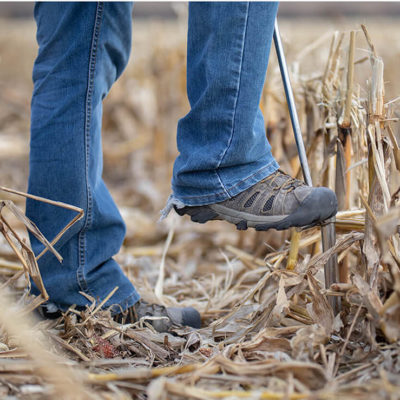When we make fertilizer recommendations for upcoming crops, it’s good to consider nitrogen credits from past crops. Leguminous species like soybean, alfalfa, and clover may provide a nitrogen credit for the next season’s crop. However, there are a few misconceptions about where the nitrogen credit comes from.
Soybean Nitrogen Credits
For this example, we’ll talk specifically about soybean nitrogen credits. Soybean residue has a very low C:N ratio, typically 8:1. A low ratio provides the necessary “recipe” for quick breakdown and release of N held in old crop residues. The nitrogen in the credit comes from both aboveground and below ground portions of the soybean plant. Nitrogen releases when mineralized from old leaves, stems, and pods. The nodules in the root system are also full of dead bacteria that were responsible for fixing nitrogen for the soybean crop. So the Nitrogen release is actually coming from both the above ground and below ground portion of the soybean plant.
Now, how much nitrogen can be credited to next season’s crop? Ward Laboratories’ rule of thumb is 40 pounds of nitrogen per acre. You may want to reduce this credit if you have low yielding soybeans due to drought, herbicide damage, or other adverse growing conditions. We recommend reducing the nitrogen credit if soybeans do not yield over 20 bushels per acre.
High Yielding Soybeans
On the flip side, high yielding soybeans (85+ bushel per acre) may provide a nitrogen credit above 40 pounds per acre. In this instance, you may consider making a conservative increase to 55 or 60 pounds per acre nitrogen credit. Additionally, if you have in season nitrogen application options available, it may be feasible to push the limit of the credit and maximize nitrogen use efficiency.
As you sit down to finalize fertilizer decisions for the growing season, be sure to include nitrogen credits from legumes. Be sure to consider species with low C:N ratios like soybean, alfalfa, pinto bean, and chickpea.
Originally Printed in January 2021 Ward Letter.



